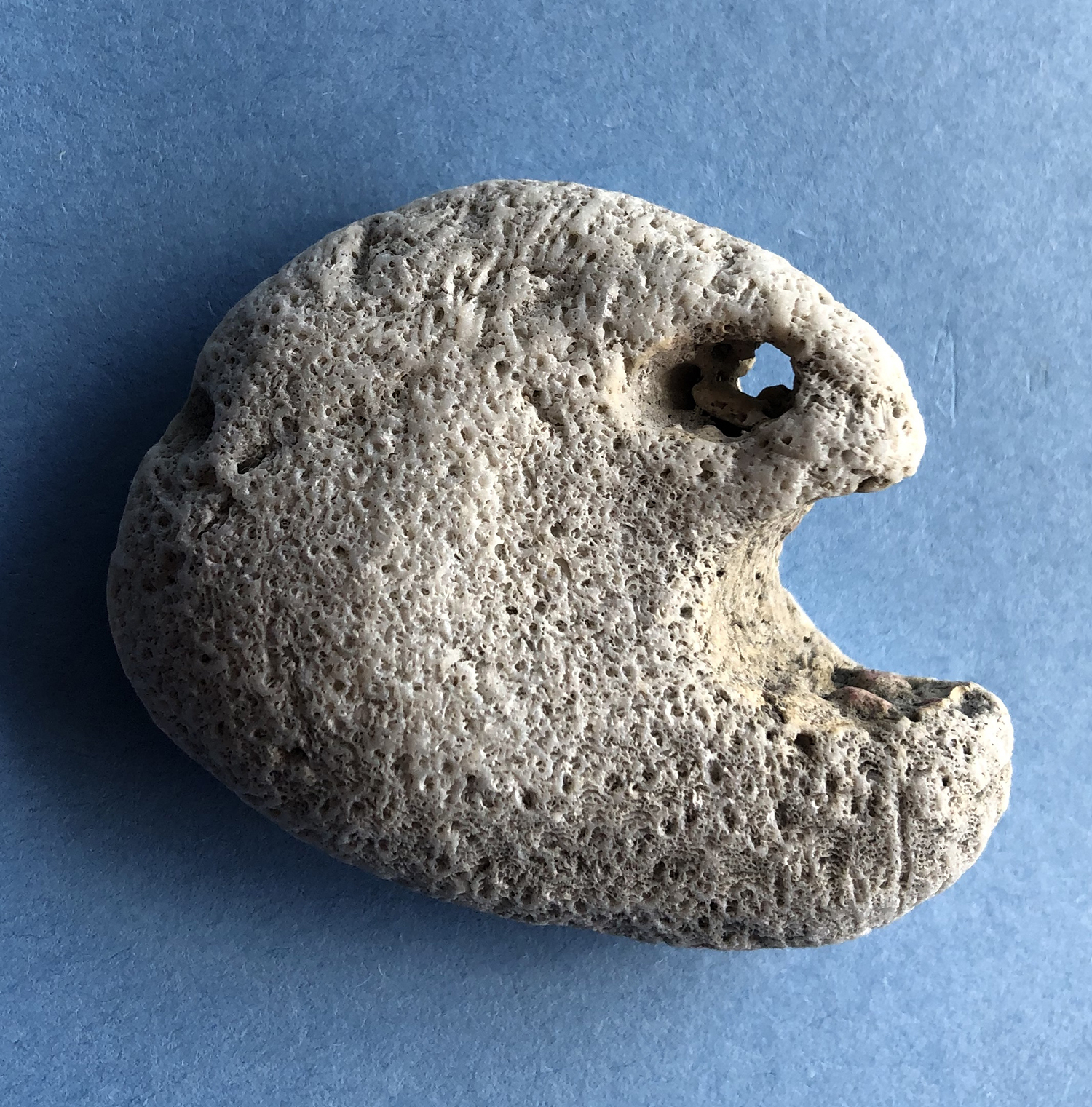
Sometimes when I walk along the shoreline near my house, I see dead pieces of coral that look like they have faces. From their expressions, it seems like they are feeling pretty upset.
That’s not surprising, since corals are facing a lot of challenges these days – damage from storms, infectious diseases, water pollution (including from sunscreen), overfishing of native species, invasive Pacific lionfish, and land development that leads to corals being smothered by sediments washing down into the bays.
Worst of all the reefs are often literally in hot water due to global warming.
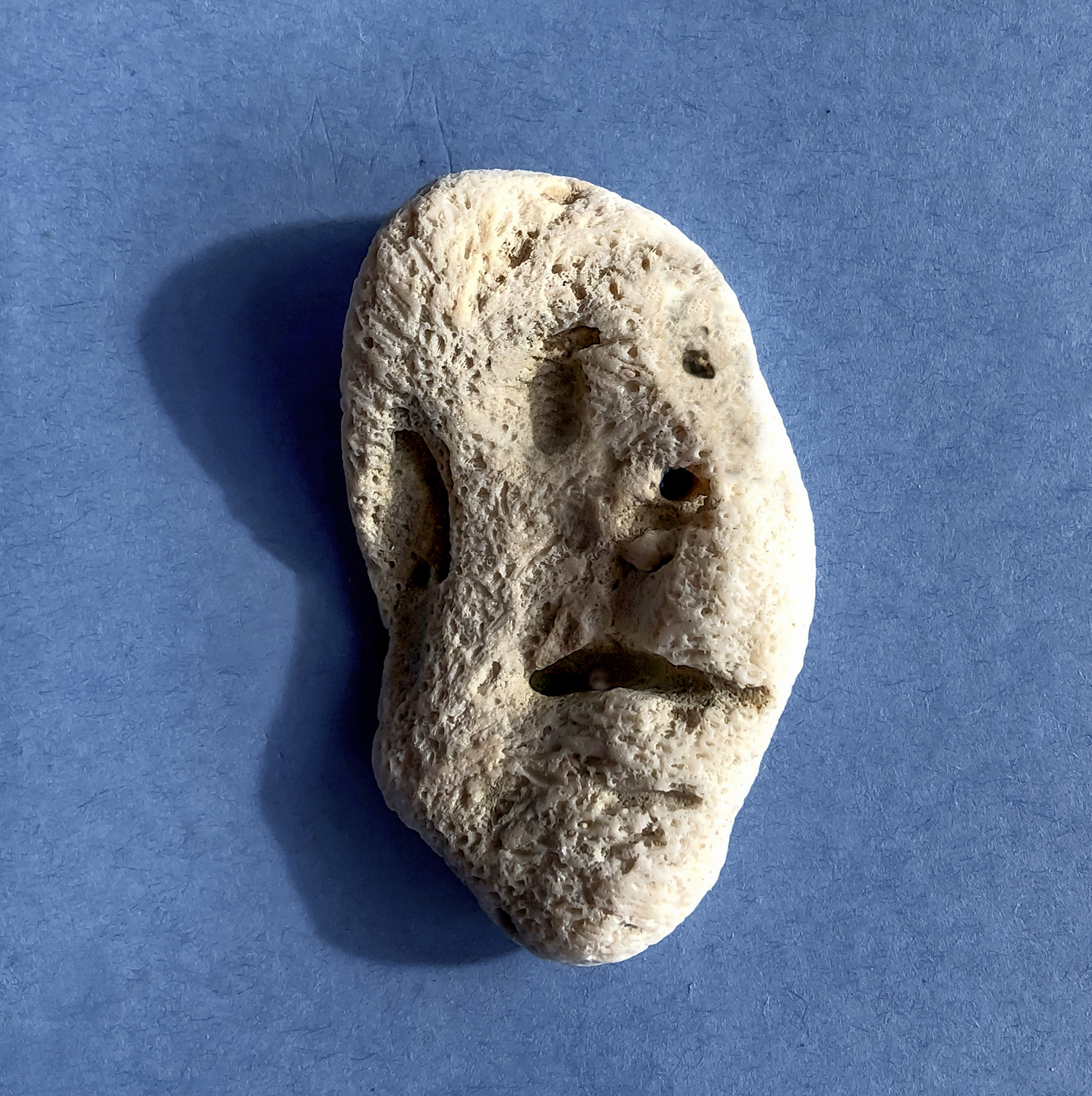
The coral pieces catching my eye seem like ghosts from past reefs. Many of them came from large coral formations on the south shore that were damaged years ago by Hurricane Hugo. The broken off parts got smaller as they were rolled around by the waves and thrown up onto the shore.
Though these coral pieces are mixed in with the rocks along the shoreline, they are not as tough as rocks. They are actually more similar to bones – they were once part of the skeletal structures supporting large colonies of individual coral animals (polyps).
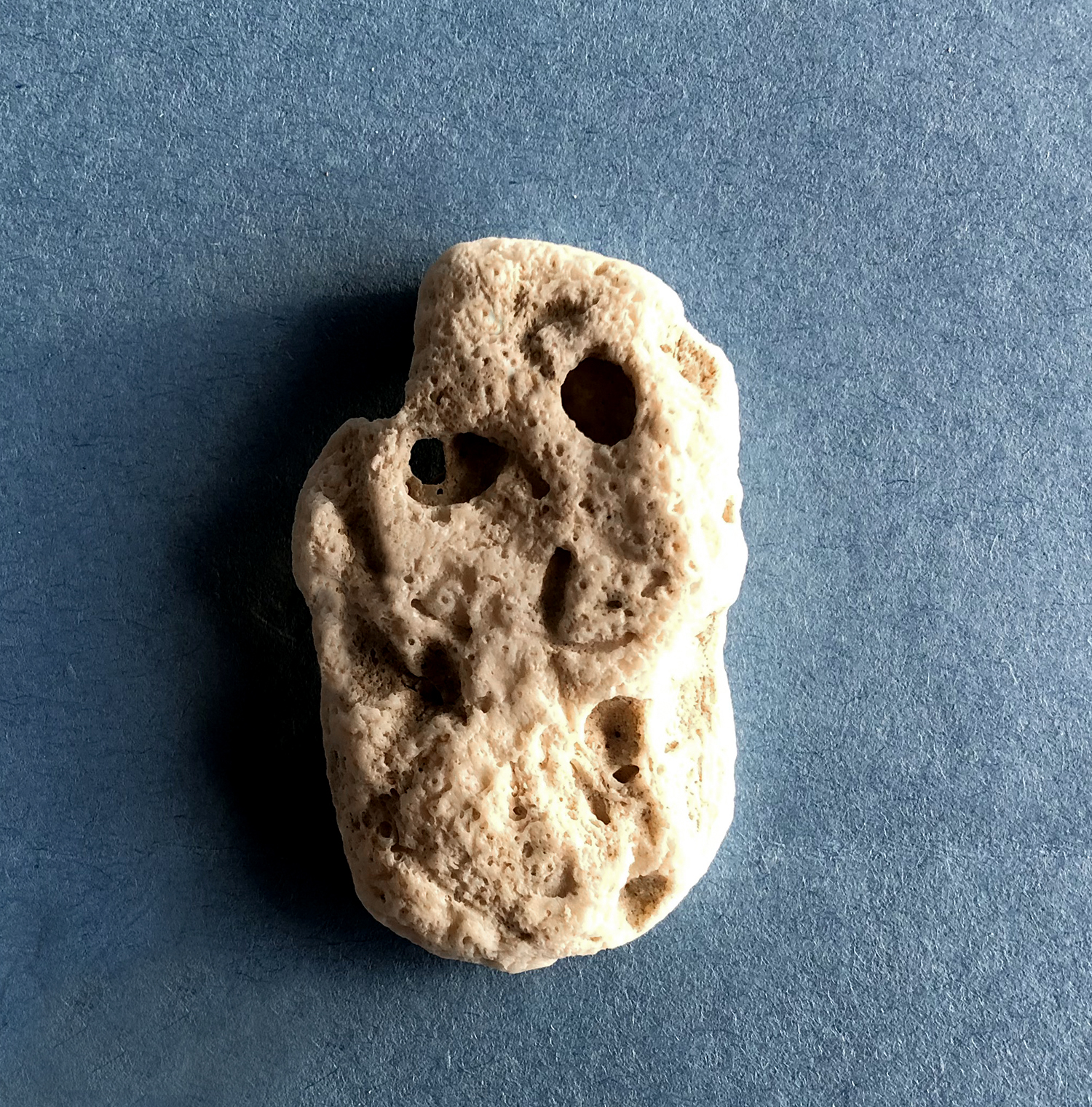
Young free-floating polyps attach themselves to submerged rocks or other hard surfaces and begin the work of creating support structures by producing and secreting calcium carbonate. The polyps can clone themselves, and over time form large groups that way. Each of the individual polyps in the colony will live inside its own little hole in the stony/bony structure.
When coral structures are damaged by storms, polyps can slowly rebuild, though their recovery is harder when they are dealing with other threats at the same time. Like high water temperatures and bleaching.
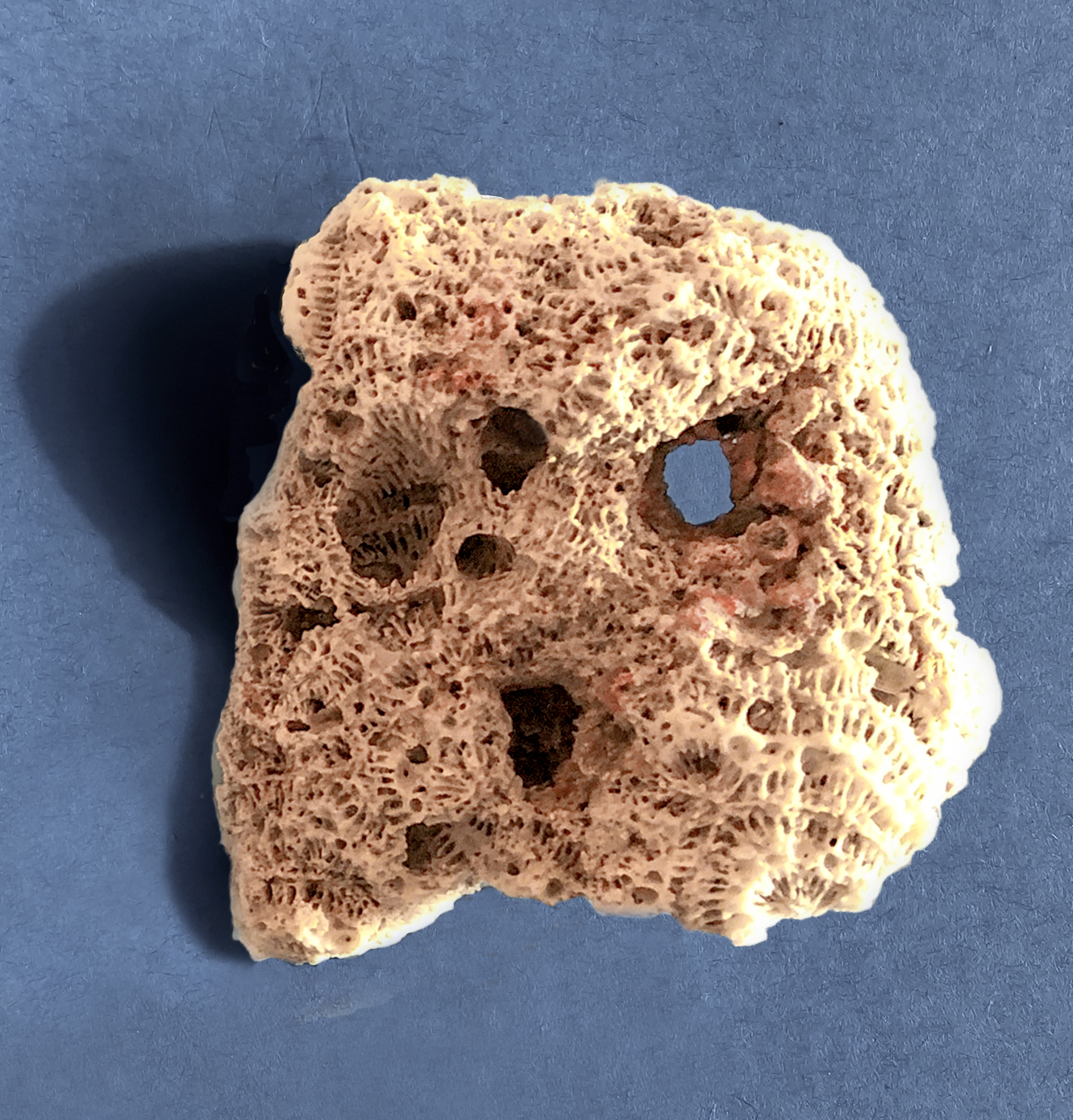
In a healthy reef, colonies of colorful coral polyps reach out with tiny tentacles surrounding their mouths, gathering plankton and organic particles from the water. But they don’t get enough nourishment from the water to keep them going, so they take in symbiotic roommates – algae – which live in their skin. The algae give the corals their color and, more importantly, produce energy through photosynthesis, which provides supplemental nutrition for their polyp hosts. Meanwhile the algae also consume wastes produced by the polyps, so they all benefit.
When the ocean water gets too hot, the algae roommates become toxic, and the coral polyps will kick them out. With the algae gone, the coral polyps don’t get enough to eat. They also lose their color and look bleached.
Though the coral polyps can survive for a while on their own, they will eventually starve to death without the algae. However, if the water cools down soon enough, the polyps will welcome the algae back, and can recover. In the meantime they are weakened, though, and may be more susceptible to diseases traveling through the water.
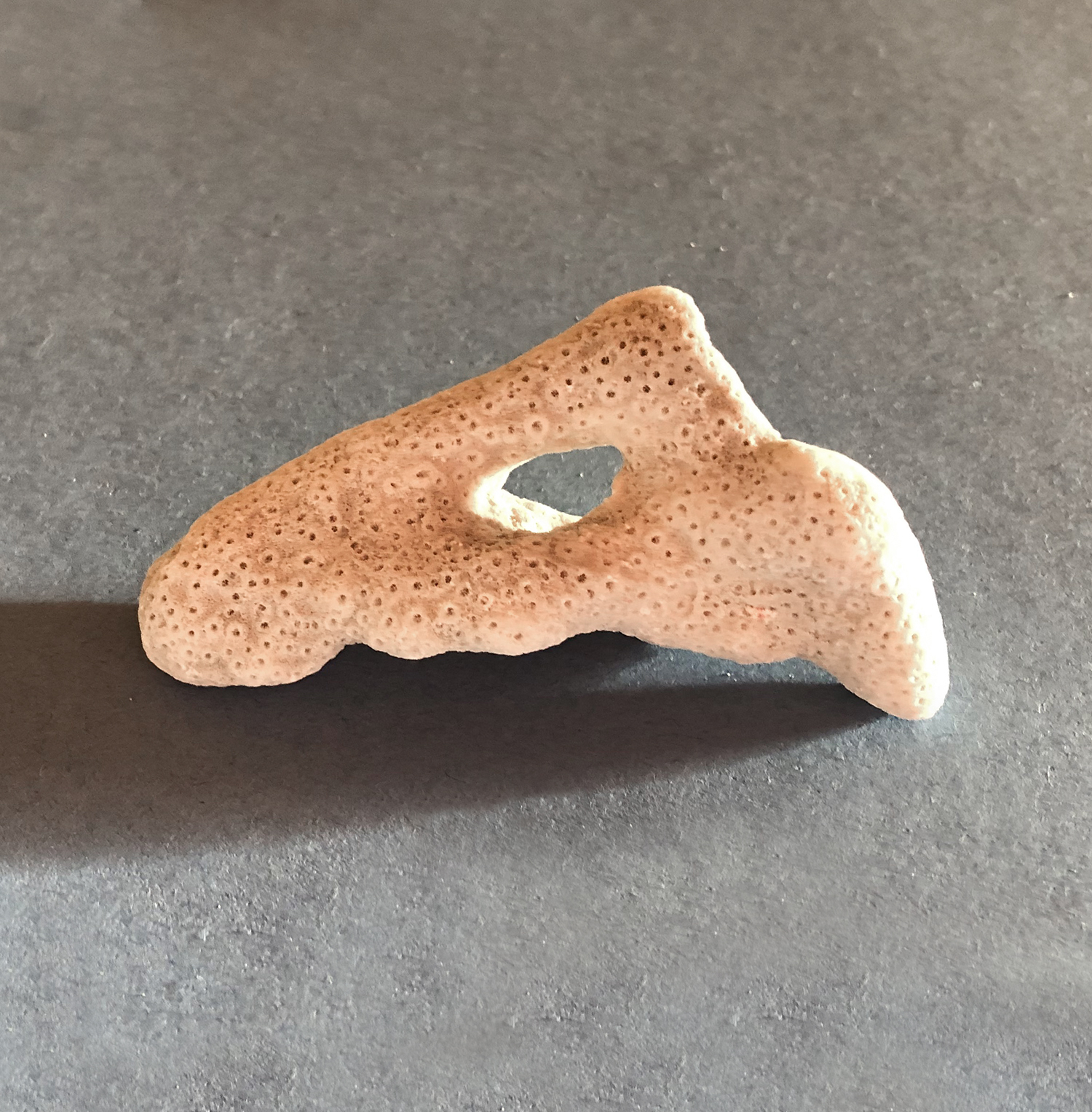
There are many experts and volunteers currently working on protecting reefs, treating diseases and restoring damaged corals. Besides supporting their work, what can we do to help?
I know one important thing is to use reef-safe sunblock containing titanium oxide or zinc oxide rather than products with chemicals like oxybenzone and octinoxate that have been found to harm corals. Spraying chemical sunscreens into the air is particularly damaging as it can end up coating the sand and shoreline. Sun-protective clothing is often a good option.
I recently heard some other suggestions from Jeff Miller, who served as a marine biologist for the National Park Service for 25 years before retiring, and is now on the board of the CORE Foundation in the Virgin Islands (Caribbean Oceanic Restoration and Education).
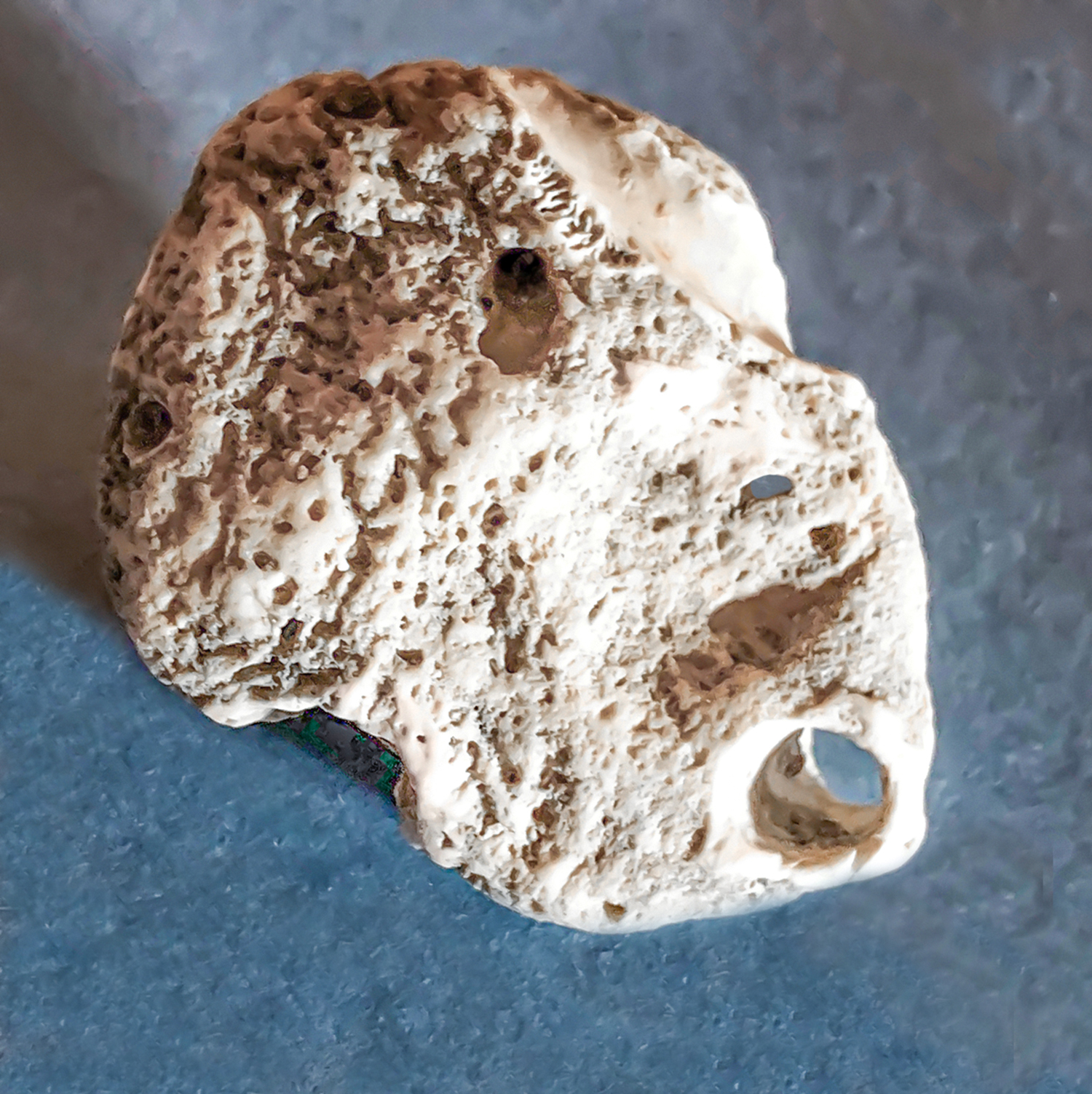
First of all, respect corals as fragile, living organisms.
When you are in a boat, be careful to avoid running into the coral, and if you use an anchor, make sure to keep it, and the anchor chain, clear of the reefs.
When you are in the water, stand only on sand. If you touch or stand on the coral, you can injure the coral polyps and their support structures.
In shallow water, move gently so sand doesn’t get onto the coral because that smothers the polyps and blocks the sunlight that algae need for photosynthesis.
On land, pick up trash that can wash into the water, and check to make sure you collect towels and equipment on the beach that could be carried out by the waves and end up on top of the coral.
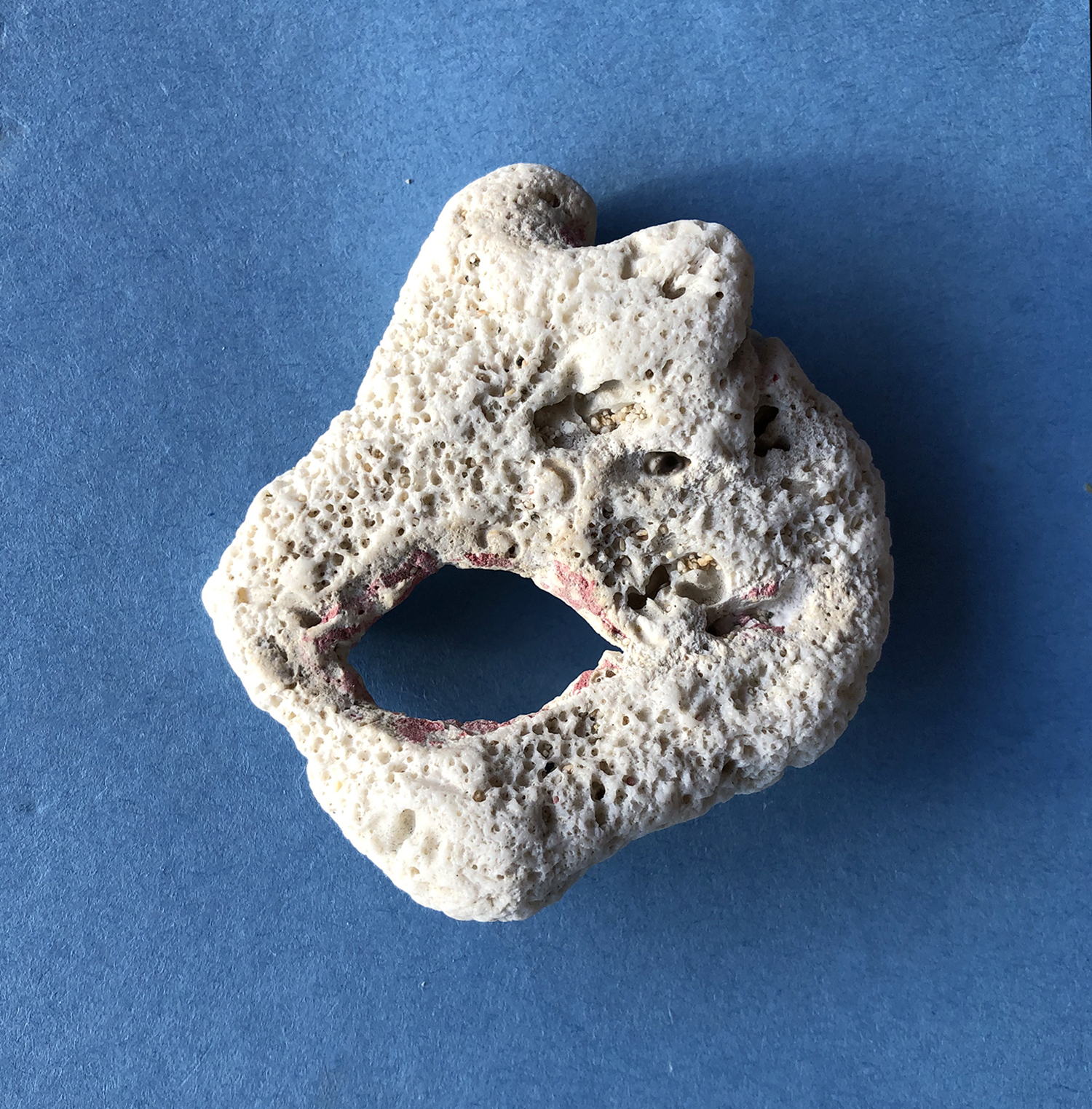
If you have a home near a reef area, or are building one, or are cutting a driveway, make sure that sediments, chemicals, fertilizers and sewage are not being allowed to wash down into the water.
And if you vote, educate yourself about issues affecting the health of the reefs, along with other fragile organisms and, where possible, support elected representatives and policies protecting them.
The corals will be grateful.
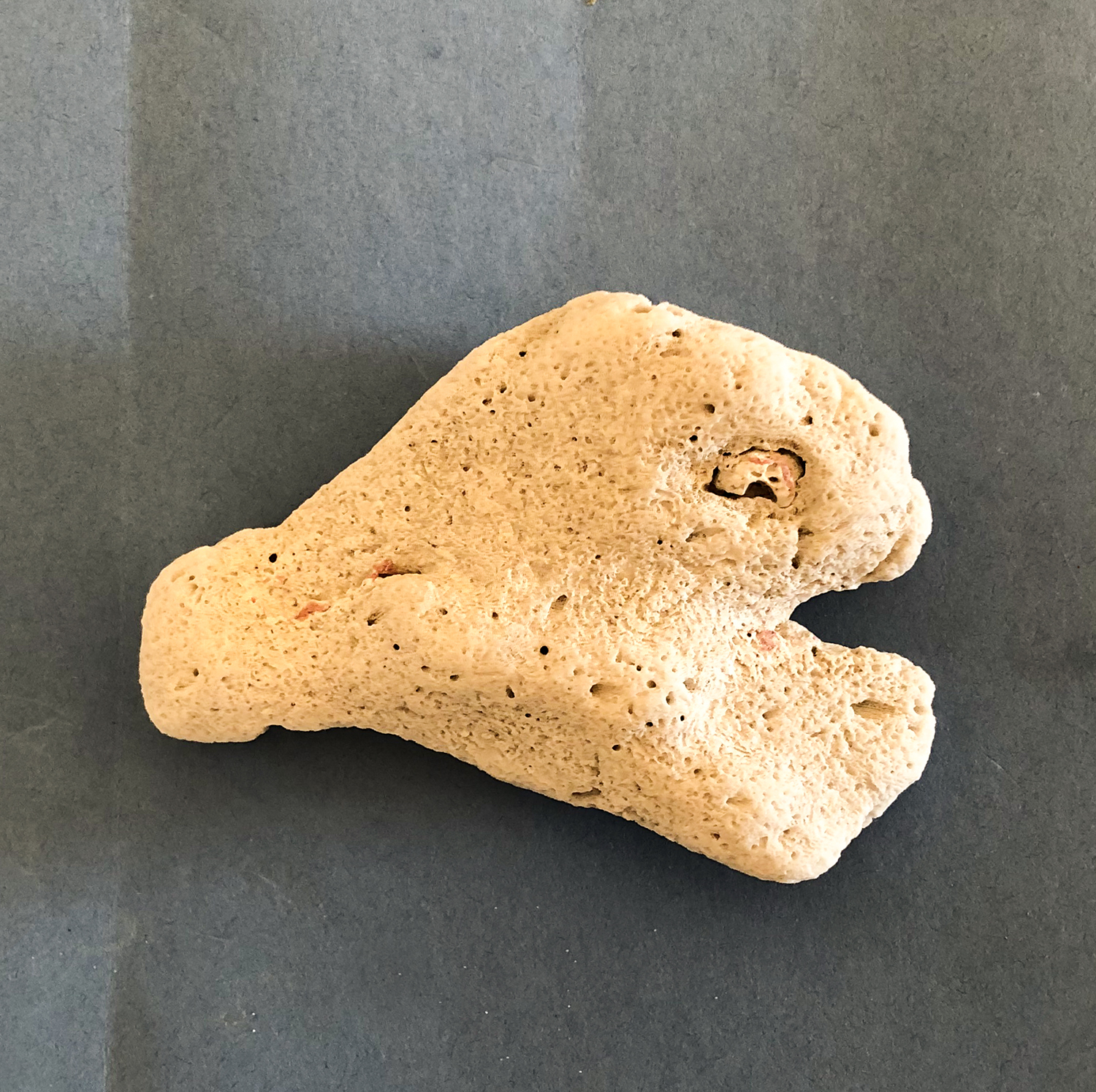
Gail Karlsson is an environmental lawyer, writer and photographer. She is the author of two books about the Virgin Islands – The Wild Life in an Island House and the guide book Learning About Trees and Plants – A Project of the Unitarian Universalist Fellowship of St. John. She has also published A Birds’ Guide to The Battery and New York Harbor. Follow her on Instagram @gailkarlsson and at gvkarlsson.blogspot.com.





